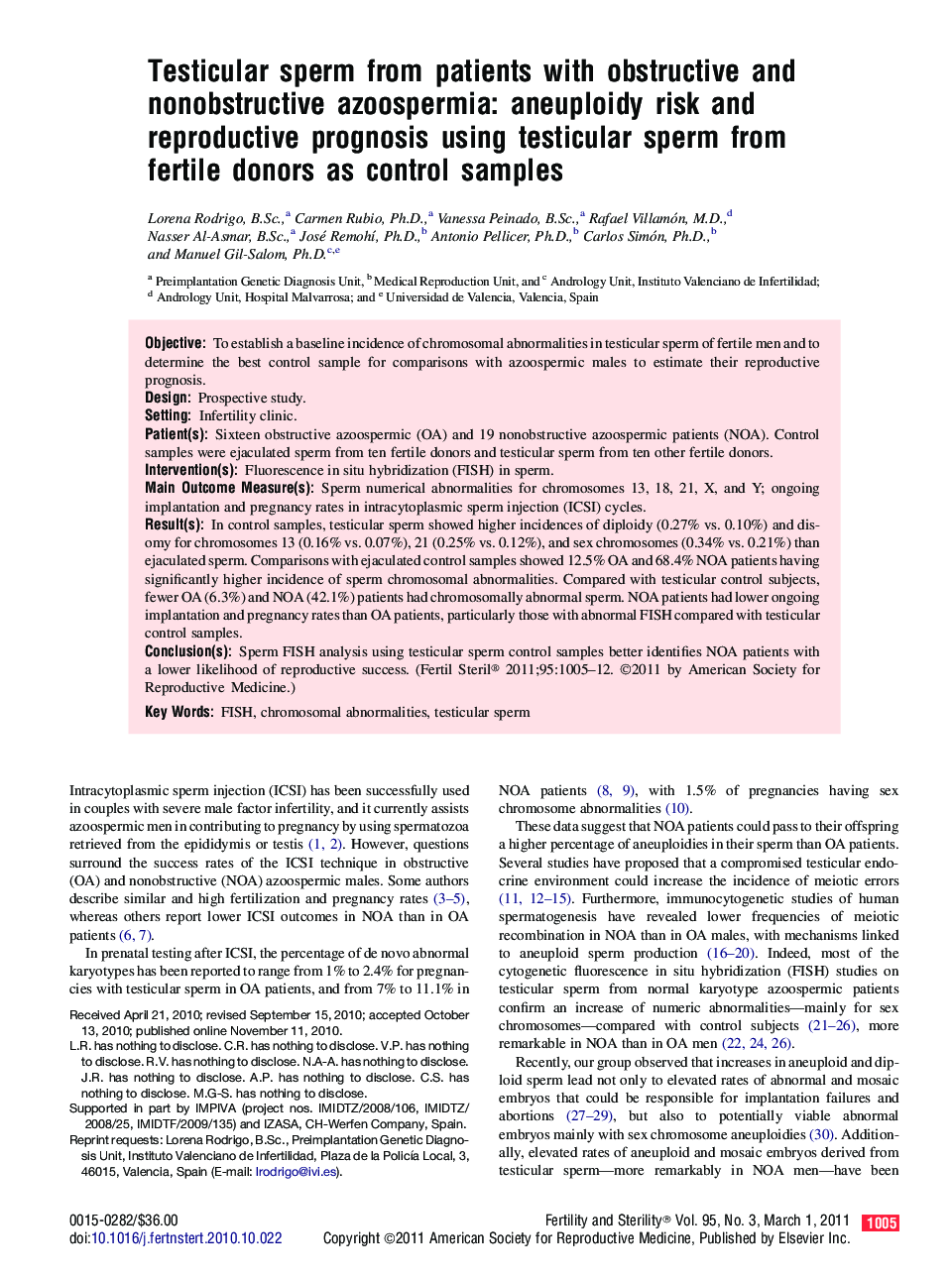| Article ID | Journal | Published Year | Pages | File Type |
|---|---|---|---|---|
| 3932409 | Fertility and Sterility | 2011 | 8 Pages |
ObjectiveTo establish a baseline incidence of chromosomal abnormalities in testicular sperm of fertile men and to determine the best control sample for comparisons with azoospermic males to estimate their reproductive prognosis.DesignProspective study.SettingInfertility clinic.Patient(s)Sixteen obstructive azoospermic (OA) and 19 nonobstructive azoospermic patients (NOA). Control samples were ejaculated sperm from ten fertile donors and testicular sperm from ten other fertile donors.Intervention(s)Fluorescence in situ hybridization (FISH) in sperm.Main Outcome Measure(s)Sperm numerical abnormalities for chromosomes 13, 18, 21, X, and Y; ongoing implantation and pregnancy rates in intracytoplasmic sperm injection (ICSI) cycles.Result(s)In control samples, testicular sperm showed higher incidences of diploidy (0.27% vs. 0.10%) and disomy for chromosomes 13 (0.16% vs. 0.07%), 21 (0.25% vs. 0.12%), and sex chromosomes (0.34% vs. 0.21%) than ejaculated sperm. Comparisons with ejaculated control samples showed 12.5% OA and 68.4% NOA patients having significantly higher incidence of sperm chromosomal abnormalities. Compared with testicular control subjects, fewer OA (6.3%) and NOA (42.1%) patients had chromosomally abnormal sperm. NOA patients had lower ongoing implantation and pregnancy rates than OA patients, particularly those with abnormal FISH compared with testicular control samples.Conclusion(s)Sperm FISH analysis using testicular sperm control samples better identifies NOA patients with a lower likelihood of reproductive success.
